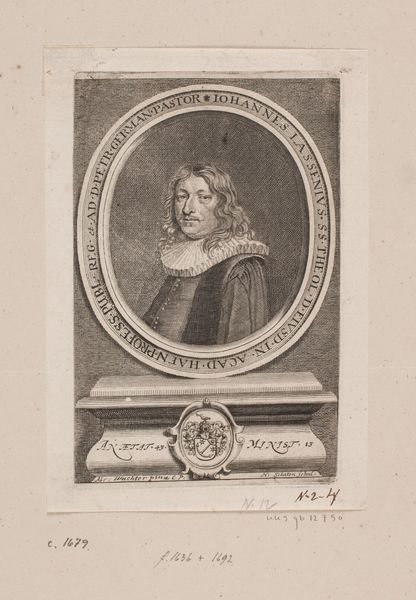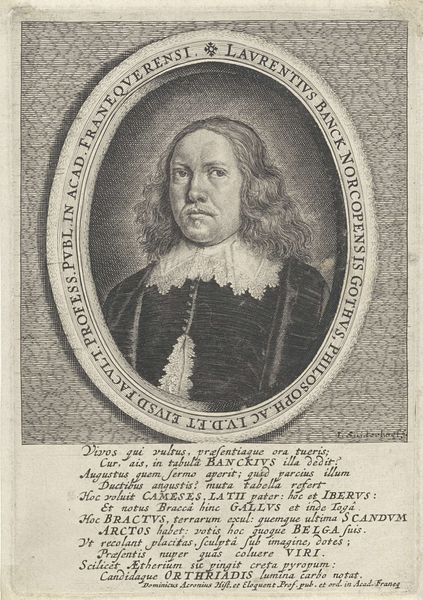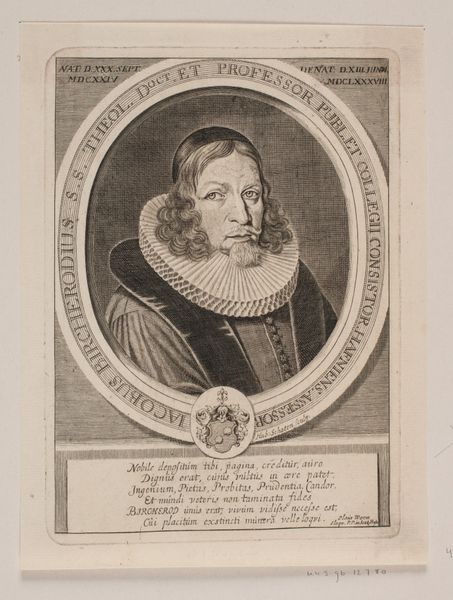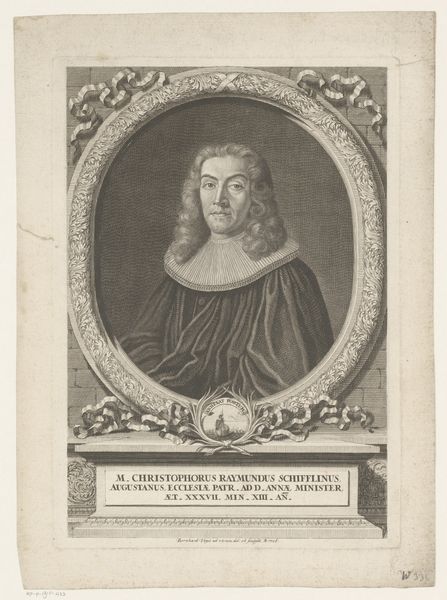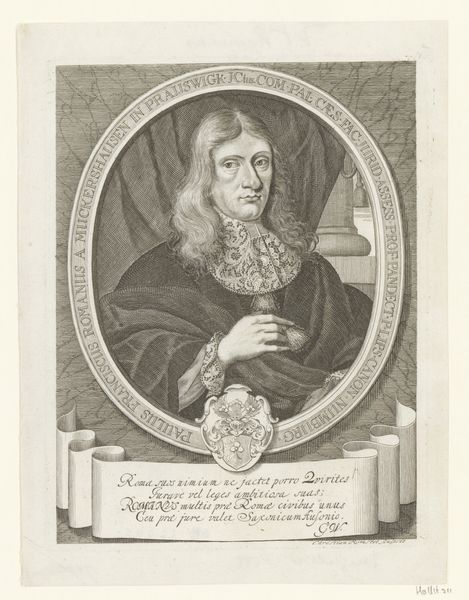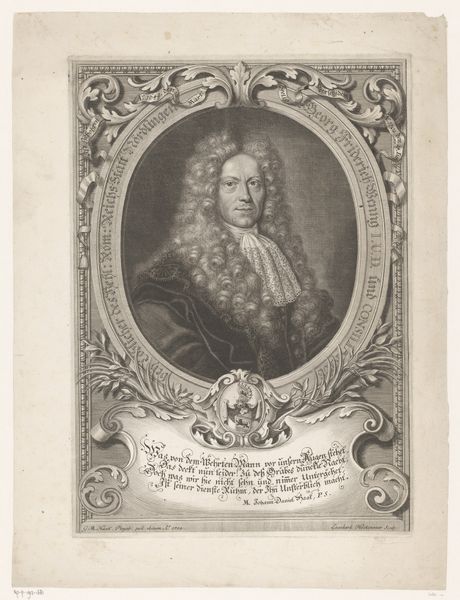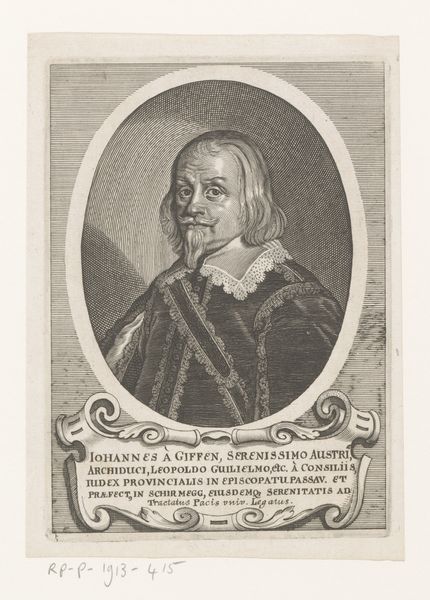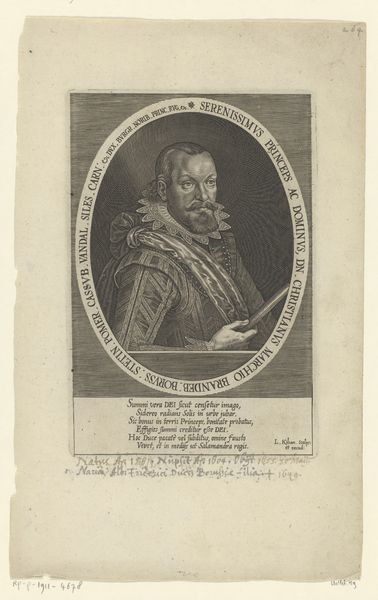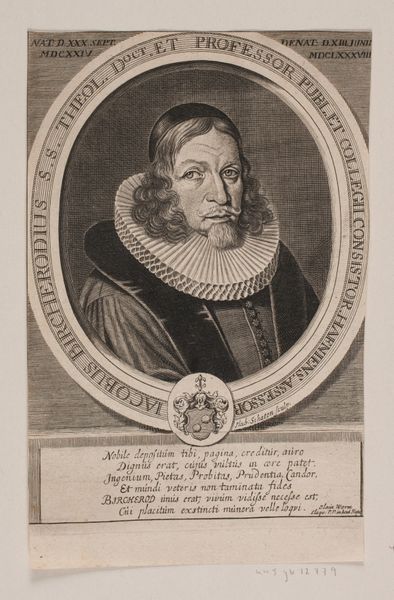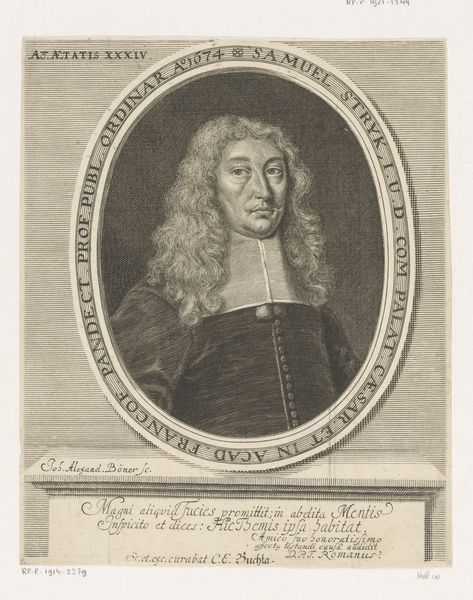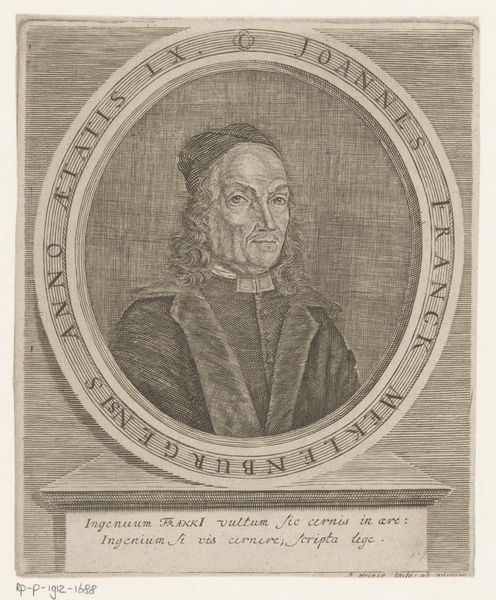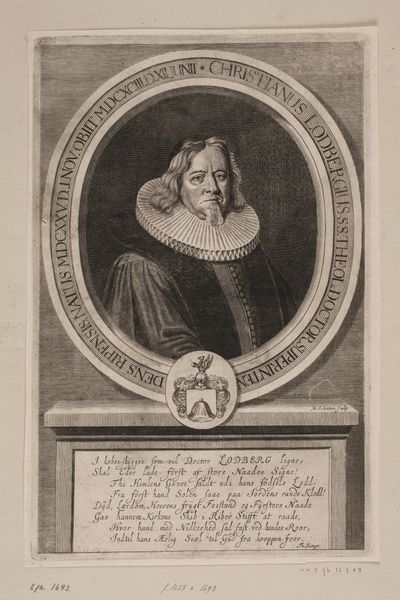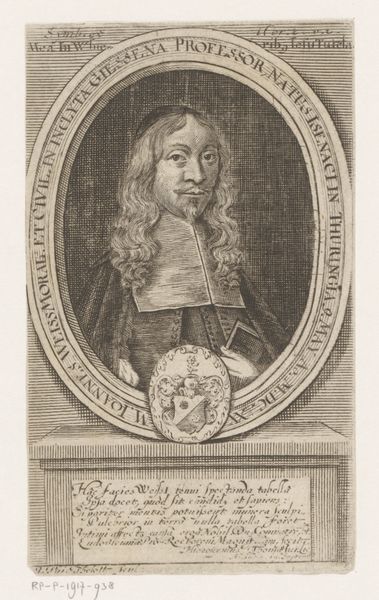
print, engraving
#
portrait
#
baroque
# print
#
old engraving style
#
engraving
Dimensions: height 183 mm, width 140 mm
Copyright: Rijks Museum: Open Domain
Editor: This engraving, "Portret van Daniel Ludwig Archiater," dates back to sometime between 1680 and 1799 and is by Joseph de Montalegre. I find it fascinating how a single portrait can encapsulate so much about the subject and the era. How do you interpret the symbols used in this work to reflect Daniel Ludwig’s life and status? Curator: Notice first how the text almost frames him, not just as words but as emblems. He is a man defined by birth, "Natus," death, "Denatus," knowledge, "Quantum est quod Scimus," and, subtly, vanity "Vanitas Vanitatum". These are cornerstones in constructing his identity for posterity. The bookshelf, the lettering... what do they trigger for you? Editor: The bookshelf places him as learned, and the precise lettering highlights the importance of language and knowledge. Does the presence of Latin text reinforce the elite nature of both medicine and portraiture at that time? Curator: Absolutely! And what about the phrase "Vanitas Vanitatum?" This is more than just a descriptor. It's a commentary. In an era grappling with shifting views of science and religion, even medical knowledge is subjected to the acknowledgment of earthly transience. Do you sense a tension in how he’s presented, between his achievements and a larger, perhaps more humbling truth? Editor: I see what you mean. The portrait celebrates an individual while simultaneously acknowledging mortality, placing his achievements in a broader context of human existence. Curator: Exactly. Through its detailed visual vocabulary, it prompts viewers to consider how we all create meaning, even in the face of ephemerality. Editor: That’s made me think about how even commissioned portraits weren't straightforward acts of immortalisation, but reflections on larger cultural anxieties.
Comments
No comments
Be the first to comment and join the conversation on the ultimate creative platform.
